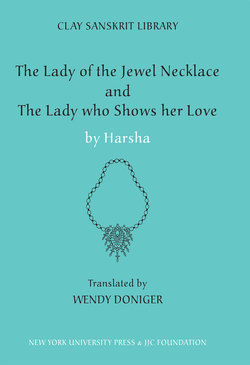Читать книгу The Lady of the Jewel Necklace & The Lady who Shows her Love - Harsha - Страница 38
На сайте Литреса книга снята с продажи.
Оглавлениеthing else. She means that he is true to type, but she says that he gives the appearance of being himself. His ultimate resemblance will be not to himself but to his son: Vasu·bhuti greets Vasava·datta, in Act Four of ‘The Lady of the Jewel Necklace,’ by saying, “Live long and prosper, and may you have a son just like the king of Vatsa.” This is the only reminder in either play that the fight between the two women is a matter not merely of sexual jealousy but of succession; and here we may recall that Harsha himself died without an heir.
There are a number of disguises in the involuted plot of ‘The Lady of the Jewel Necklace’ (Doniger 2005: 29–35). People constantly accuse one another of imagining things to be other than they are, and they are usually right. Ratnavali is disguised as Sagarika before the play begins. She mistakes Udayana for Kama, the god of love (an understandable mistake, since she sees Vasava·datta simultaneously worshipping Kama and Udayana), and she imaginatively represents herself as the king’s lover in the portrait she paints. Then the intentional disguises begin: Ratnavali-as-Sagarika is disguised as Vasava·datta and mistaken for Vasava·datta, and Vasava·datta, not disguised at all, is taken for (Ratnavali-as)-Sagarika-as-Vasava·datta. Vasava· datta begins the masquerade inadvertently when she gives her own clothes to her rival’s friend; but then the reins are taken out of her hands when the clothes are used to deceive her and she unconsciously impersonates Ratnavali-as-Sagarika consciously impersonating her. Through a kind of double-double-cross, in which the king mistakes his queen for the Other Woman, and the Other Woman for the queen, ________
